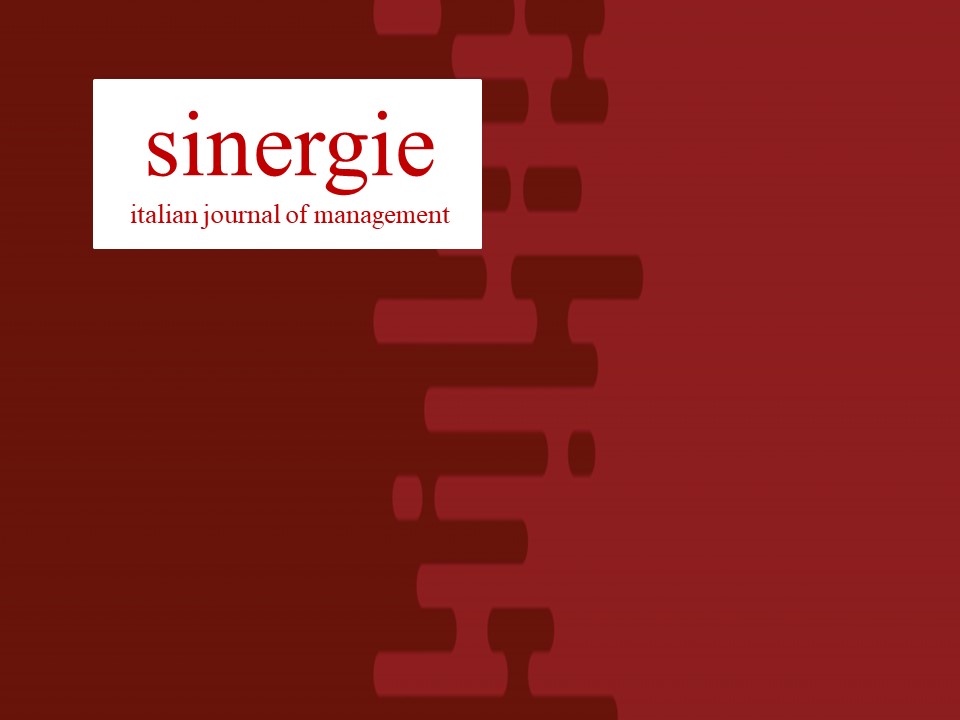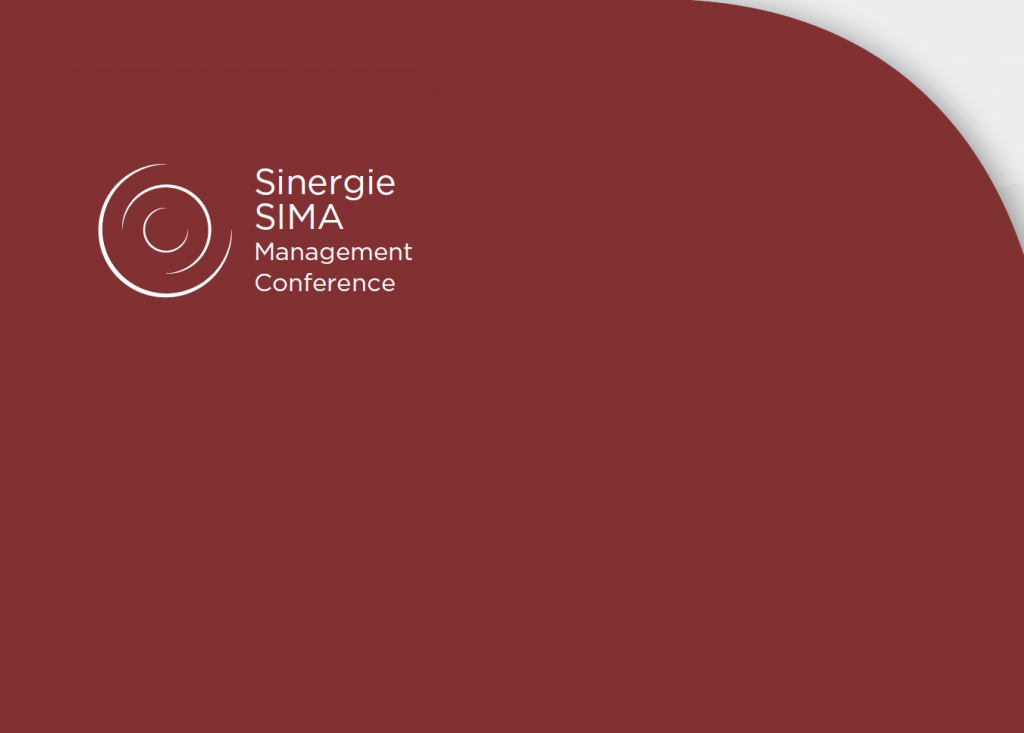Pirate or subscriber? An exploratory study on Italian consumers music habits
Purpose of the paper: This paper analyzes Italian consumers music habits in terms of online piracy behaviors and their interest toward subscription-based music services (SBMS), i.e. services that for a small monthly fee give users legal access to vast music libraries across multiple devices. The objective is to try and profile a piracy-prone consumer and explore if SBMS could be a viable alternative to online music piracy in Italy, where the general piracy rate is very high.
Methodology: The study is based on an empirical quantitative analysis through the collection of 505 questionnaires completed by Italian consumers.
Findings: The paper highlights how Italian consumers reflect the attitude-behavior gap in music consumption, as they perceive online music piracy as ethically wrong, yet they still show low preference for the legal, reasonably priced choice (such as SBMS). Younger, male, lower education, students have the highest propensity towards online piracy. In addition, consumers awareness, familiarity and interest in subscription-based music services are still very low.
Research limitations: The limitations of the paper are linked mainly to the adapted scales, to the omission of alternative determinants of attitude towards piracy, to the composition of the sample and for analyzing only two subscription-based music services (Napster and Spotify).
Managerial implications: The results call for greater efforts by music industry actors and public institutions to educate Italian consumers about the consequences of their online piracy behavior and the possible solutions offered by SBMS.
Originality of the paper: This paper is the first to focus on Italian consumers music habits, their attitude and behavior towards online piracy and their interest toward subscription-based music services as a viable alternative.
Riferimenti bibliografici
AJZEN I. (1991), The theory of planned behavior, Organizational Behavior and Human Decision Processes, vol. 50, n. 2, pp. 179-211.
ANG S.H., CHENG P.S., LIM E.A., TAMBYAH S.K. (2001), Spot the difference: consumer responses towards counterfeits, Journal of Consumer Marketing, vol. 18, n. 3, pp. 219-235.
BAGNASCO A.M. (2012), Economia della pirateria filmica: una ricerca esplorativa, Economia e Diritto del Terziario, vol. 3, pp. 433-448.
BELK R. (2014), You are what you can access: Sharing and collaborative consumption online, Journal of Business Research, vol. 67, n. 8, pp. 1595-1600.
BELLEFLAMME P., PEITZ M. (2014), Digital piracy: an update, in Backhaus J. (Ed.), Encyclopedia of Law and Economics, Springer (in print), UCL.
BHATTACHARJEE S., GOPAL, R.D., SANDERS, G.L. (2003), Digital music and online sharing: software piracy 2.0? Considering the similarities and the unique characteristics of online file sharing and software piracy, Communication of the ACM, vol. 46, n. 7, pp. 107-111.
CASTRO D., BENNET R., ANDES S. (2009), Steal these policies: strategies for reducing digital piracy, The Information Technology and Innovation Foundation, (Washington, DC), http://www.itif.org/files/2009-digital-piracy.
CHAUDHRY P.E., HILL R.P., STUMPF S.A, YALCKINKAYA G. (2011), Consumer complicity across emerging markets, Advances in International Marketing, vol. 10, n. 22, pp. 223-239.
CHAUDHRY P.E., CESAREO L., STUMPF S.A. (2014), What influences rampant movie piracy?, Journal of Management Systems, vol. 24, n.4, pp. 73-96.
CHIANG E.P., ASSANE D. (2008), Music piracy among students on the university campus: Do males and females react differently? The Journal of Socio-Economics, vol. 37, n.4, pp. 1371-1380.
COX J., COLLINS A. (2014), Sailing in the same ship? Differences in factors motivating piracy of music and movie content, Journal of Behavioral and Experimental Economics, vol. 50, pp. 70-76.
CRONBACH J.L. (1951), Coefficient alpha and the internal structure of test, Psychometrika, vol. 16, n. 3, pp. 297-334.
DASTOUS A., COLBERT F., MONPETIT D. (2005), Music piracy on the web – How effective are anti-piracy arguments? Evidence from the theory of planned behavior, Journal of Consumer Policy, vol. 28, n. 3, pp. 289-310.
DEAN J., (2008), The Attitude-Behavior gap: Why we say one thing but do the opposite, http://www.spring.org.uk/2008/03/attitude-behaviour-gap-why-we-say-one.php (Last Accessed February 27th 2014).
FIMI, Federazione Industriale Musicale Italiana, (2013), Musica digitale: sale del 13% nel primo trimestre 2013 e supera il 35% del mercato, +28% per lo streaming, http://www.fimi.it/2584. (Last accessed December 17th 2014)
FISHBEIN M., AJZEN I. (1975), Belief, attitude, intention and behavior: An introduction to theory and research, Addison-Wesley, Reading, MA.
GIESLER M. (2006), Consumer gift systems, Journal of Consumer Research, vol. 33, n.2, pp. 283-290.
GRASSI I. (2010), Pirateria, differenziazione del prodotto e incentivi alla collusione, Economia e Politica Industriale, vol. 37, n. 4, pp. 111-128.
GRASSI I. (2007), File-sharing, sampling e pirateria nel mercato musicale: un modello teorico, Studi Economici, vol. 62, n. 92, pp. 93-120.
GRASSI I. (2006), Pirateria e file-sharing: una rassegna della letteratura, Studi Economici, vol. 61, n. 89, pp. 135-154.
HENNIG-THURAU T., HENNING V., SATTLER H. (2007), Consumer file sharing of motion pictures, Journal of Marketing, vol. 71, n.4, pp. 1-18.
HONG S.H. (2004), The Effect of Napster on Recorded Music Sales: Evidence from the Consumer Expenditure Survey, Stanford Institute for Economic Policy Research Working Paper, 03-18.
IFPI, International Federation of the Phonographic Industry, (2013), Digital Music Report. Engine of a Digital World, http://www.ifpi.org/content/library/DMR2013_Italian.pdf (Last accessed December 17th 2014).
IFPI, International Federation of the Phonographic Industry (2014), Digital music report. Lighting up new markets, http://www.ifpi.org/downloads/Digital-Music-Report-2014.pdf (Last accessed November 28th 2014).
ISTAT (2013), Noi-Italia. Indagine multiscopo sulle famiglie Aspetti della vita quotidiana Gli utenti di Internet, http://noi-italia.istat.it/fileadmin/user_upload/allegati/88.pdf (Last Accessed November14th 2014).
KOH B., MURTHI B.P.S., RAGHUNATHAN S. (2014), Shifting demand: online music piracy, physical music sales, and digital music sales, Journal of Organizational Computing and Electronic Commerce, vol. 24, n.4, pp.66-387.
LANGENDERFER J., COOK D.L. (2001), Copyright Policies and Issues Raised by A&M Records v. Napster: The Shot HeardRound the World or Not with a Bang but a Whimper?, Journal of Public Policy and Marketing, vol. 20, n. 2, pp. 280-288.
LASTOVICKA J.L., GARDNER D.M. (1978), Low involvement versus high involvement cognitive structures, Advances in Consumer Research, vol. 5, n.1, pp. 87-92.
LEE J.H., DOWNIE J.S. (2004), Survey Of Music Information Needs, Uses, And Seeking Behaviours: Preliminary Findings, in ISMIR (Vol. 2004, p. 5th).
LIAO C.H., HSIEH I.Y. (2013), Determinants of Consumers Willingness to Purchase Gray-Market Smartphones, Journal of Business Ethics, vol. 114, n.3, pp. 409-424.
LIEBOWITZ S.J. (2006), File Sharing: Creative Destruction or Just Plain Destruction?, Journal of Law and Economics, vol. 49, n. 1, pp. 1-28.
LYSONSKI S., DURVASULA S. (2008), Digital piracy of MP3s: consumer ethical predispositions, Journal of Consumer Marketing, vol. 25, n. 3, pp. 167-178.
MALHOTRA N.K. (2004), Marketing research: an applied orientation, Pearson Education Inc., New Jersey.
MICHEL N.J. (2006), The impact of digital file sharing on the music industry: An empirical analysis, Topics in Economic Analysis and Policy, vol. 6, n. 1, pp.1-22.
MOONEY P., SAMANTA S., ZADEH A.H.,(2010), Napster and its Effects on the Music Industry: An Empirical Analysis, Journal of Social Sciences, vol. 6, n. 3, pp. 303.
OBERHOLZER-GEE F., STRUMPF K. (2007), The effect of file sharing on record sales: An empirical analysis, Journal of Political Economy, vol. 115, n. 1, pp. 1-42.
OBERHOLZER-GEE F., STRUMPF K. (2010), File sharing and copyright (pp. 19-55) in Lerner J., Stern S. (Eds), Innovation Policy and the Economy, vol. 10, University of Chicago Press, Illinois.
OHIM, European Office for Harmonization in the Internal Market (2013), European citizens and Intellectual Property: perception, awareness and behavior, Report, https://oami.europa.eu/tunnel-web/secure/webdav/guest/document_library/observatory/documents/IPContributionStudy/25-11-2013/european_public_opinion_study_web.pdf (Last accessed December 17th 2014).
PAGE W. (2013), Adventures in Netherland. Spotify, piracy and the new Dutch experience, A Report commissioned by Spotify. https://press.spotify.com/it/2013/07/17/adventures-in-netherlands/ (Last accessed April 20th 2015).
PAPIES D., EGGERS F., WLOEMERT N. (2011), Music for free? How free ad-funded downloads affect consumer choice, Journal of the Academy of Marketing Science, vol. 39, n. 5, pp. 777-794.
PASTORE A., CESAREO L. (2014), No al falso! Unindagine esplorativa sulle strategie anti-contraffazione delle fashion firms, Mercati e Competitivit, vol. 2, pp. 81-102.
PEITZ M.,WAELBROECK P. (2004), The effect of internet piracy on CD sales: Cross-section evidence, CESifo working paper, n. 1122, category 9.
PRENDERGAST G., CHUEN L.H., PHAU I. (2002), Understanding consumer demand for non-deceptive pirated brands, Marketing Intelligence and Planning, vol. 20, n. 7, pp. 405-416.
PUTO C.P., WELLS W.D. (1984). Informational and transformational advertising: the differential effects of time, Advances in Consumer Research, vol. 11, n. 1, pp. 638-643.
ROB R., WALDFOGEL J.,(2006), Piracy on the High Cs: Music Downloading. Sales Displacement, and Social Welfare in a Sample of College Students, Journal of Law and Economics, vol. 49, pp. 29-62.
ROBERTSON K., MCNEILL L., GREEN J., ROBERTS C. (2012), Illegal Downloading, Ethical Concern, and Illegal Behavior, Journal of Business Ethics, vol. 108, n. 2, pp. 215-227.
SHEERAN P. (2002), Intention-behavior relations: A conceptual and empirical review, European Review of Social Psychology, vol. 12, n. 1, pp. 1-36.
SHOHAM A., RUVIO A.D.M. (2008), (Un)ethical consumer behavior: Robin hoods or plain hoods, The Journal of Consumer Marketing, vol. 25, n. 4, pp. 200-210.
SUDLER H. (2013), Effectiveness of anti-piracy technology: Finding appropriate solutions for evolving online piracy, Business Horizons, vol. 56, n. 2, pp. 149-157.
SWENEY M. (2012), Rhapsody takes battle to Spotify by buying Napsters European operation, The Guardian, January 26th.
TEO T.S. (2001), Demographic and motivation variables associated with Internet usage activities, Internet Research, vol. 11, n. 2, pp. 125-137.
TREMOLADA L. (2013), Lo streaming batte il download dei singoli, Il Sole 24 Ore, October 20th.
UPHSAW D., BABIN L.A. (2010), Music downloading: competing against online piracy, International Journal of Business and Public Administration, vol. 7, n. 1, pp. 14-26.
WEIJTERS B., GOEDERTIER F., VERSTREKEN S. (2014), Online Music Consumption in Todays Technological Context: Putting the Influence of Ethics in Perspective, Journal of Business Ethics, vol. 124, n. 4, pp. 537-550.
XIA L., MONROE K. B., COX J. L. (2004), The price is unfair! A conceptual framework of price fairness perceptions, Journal of Marketing, vol. 68, n. 4, pp. 1-15.
YANG Z., WANG J., MOURALI M. (2014), Effect of peer influence on unauthorized music downloading and sharing: The moderating role of self-construal, Journal of Business Research, forthcoming.
ZENTNER A. (2005), File sharing and international sales of copyrighted music: An empirical analysis with a panel of countries, Topics in Economic Analysis and Policy, vol. 5, n. 1, pp. 1-15.


